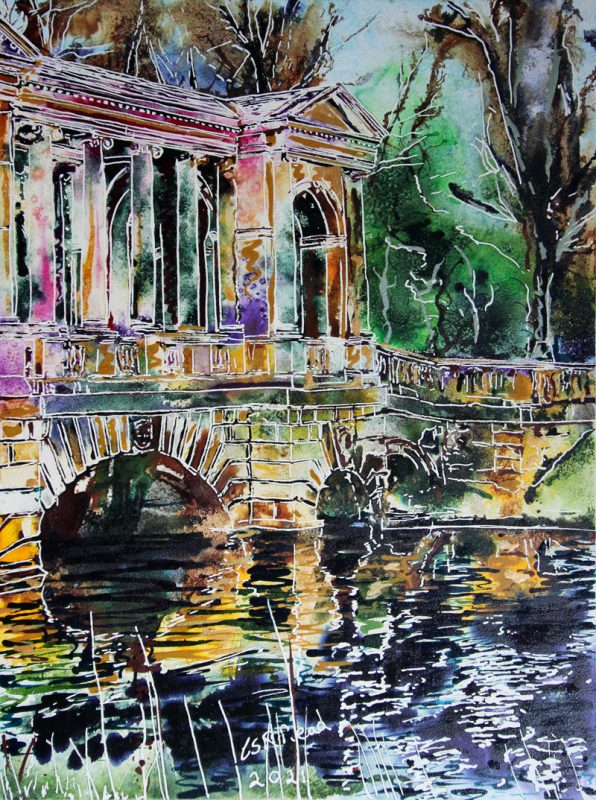Looking at the Palladian Bridge Painting it's easy to imagine that glorious construction was always there.
Old buildings create a sense of permanence, as weathering and time make their mark. The buildings develop an organic look. Lichen and mosses creep in, corners and sharp edges crumble. Nature tries to claim everything that stays still, and is left alone. In fact she invariably succeeds.
Reflecting history in the Palladian Bridge Painting
The Palladian bridge has been standing on this spot since the 18th century. Prior to that just farmland, gardens and the stream. The painting is the first I’ve created using a clay board. It’s a different experience to working on paper. I can see the appeal of fresco painting, although this is not a fresco, since the clay was dry when I painted it. The porous nature of the surface mimics watercolour paper well and feels more permanent.
The image itself shows the bridge at an angle. When the gardens were originally created by Capability Brown, the fashion was open vistas and symmetry. Designed by James Gibbs, the Palladium Bridge is a perfect example of this, and I’ve deliberately chosen to ignore the symmetrical and present an oblique view.

In the Palladian Bridge Painting, the Grand architecture is reflected in gently rippling water below. A picture of serenity and deep, dark recesses. The central arch the darkest point, and I find my eyes repeatedly drawn back to the spot. It may be dark, but there are colours, deep, almost black, but not quite. With close inspection, we find blues, greens and browns. The river below flows slowly, a breeze rippling the waters, but still the reflections of the bridge and surrounding trees are visible.
Contrasts abound
Brilliant sunlit stone against the shadowy depths beneath, the bridge boasts rainbow hues and subtle background colours besides loud vibrant pigments shouting to announce their presence.
At this size, the details of the bridge are suggested, yet its pedigree is in no doubt, or rather the pedigree of the landowner. For this building was created to impress and inspire awe. Any bridge could have served to cross the waters, but this one is more than that. It is a dream, a fantasy made real.
I wonder what thoughts and ideas went through the minds of those who created it?
